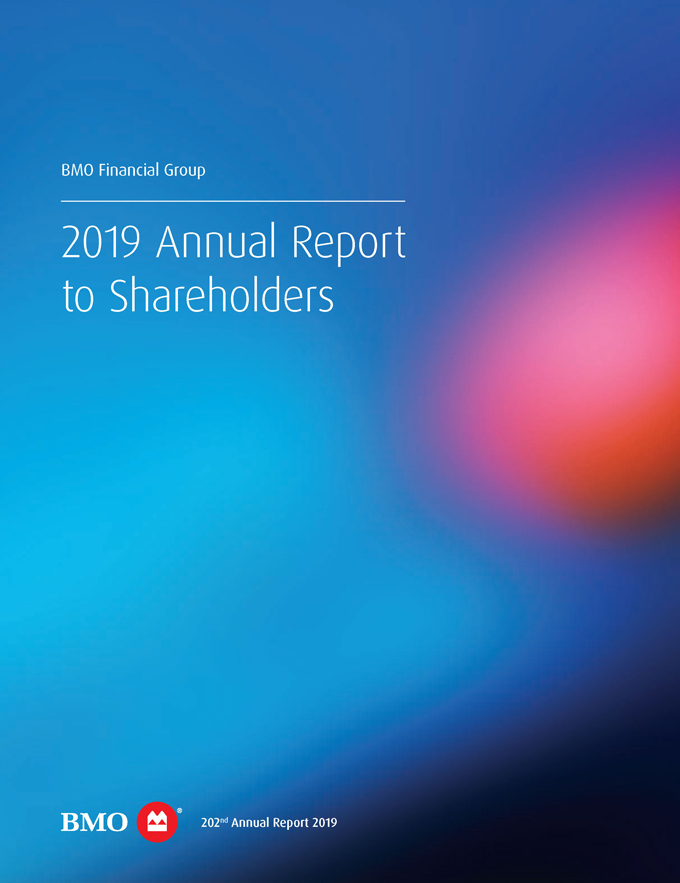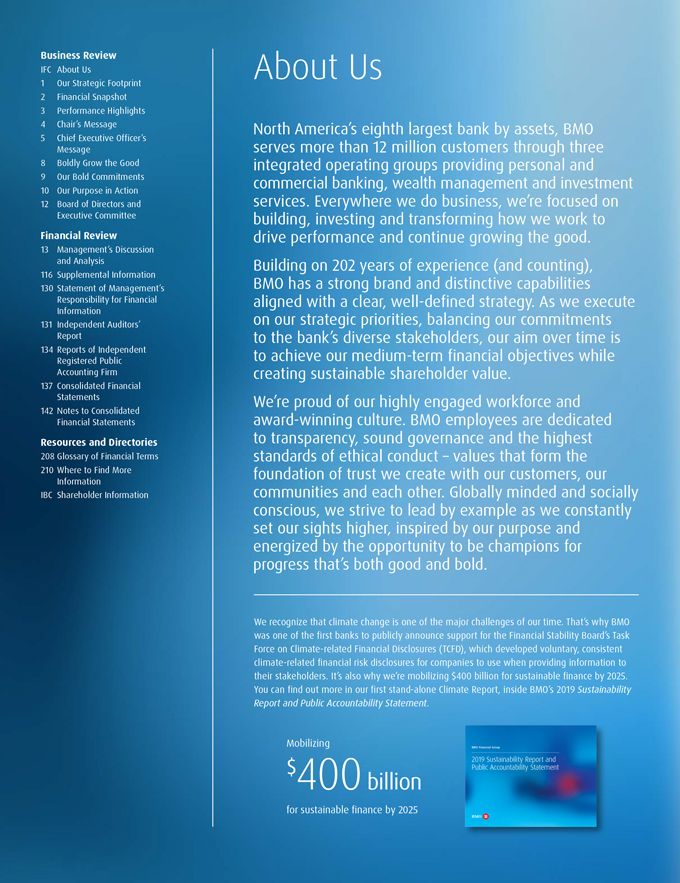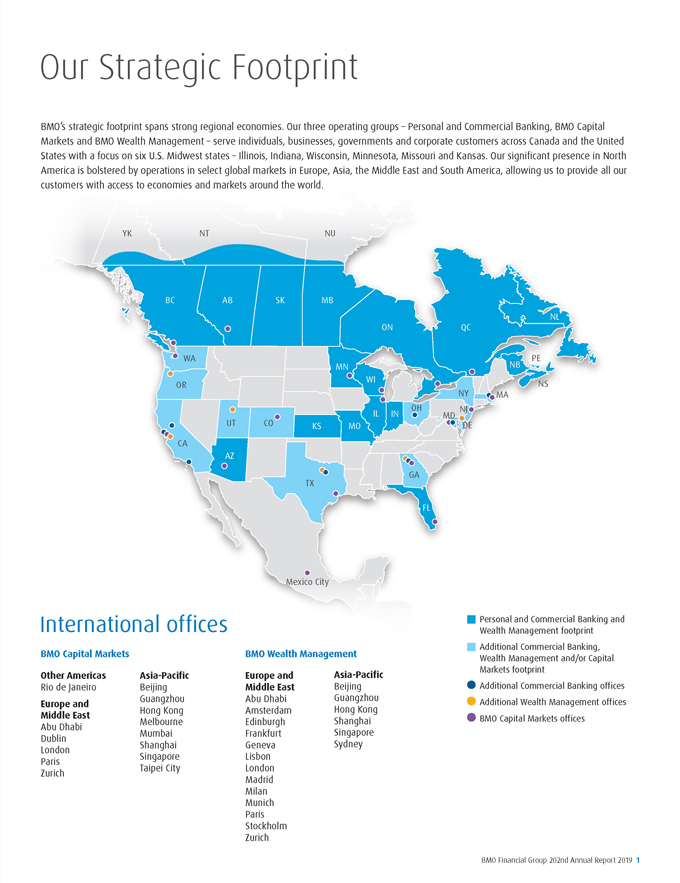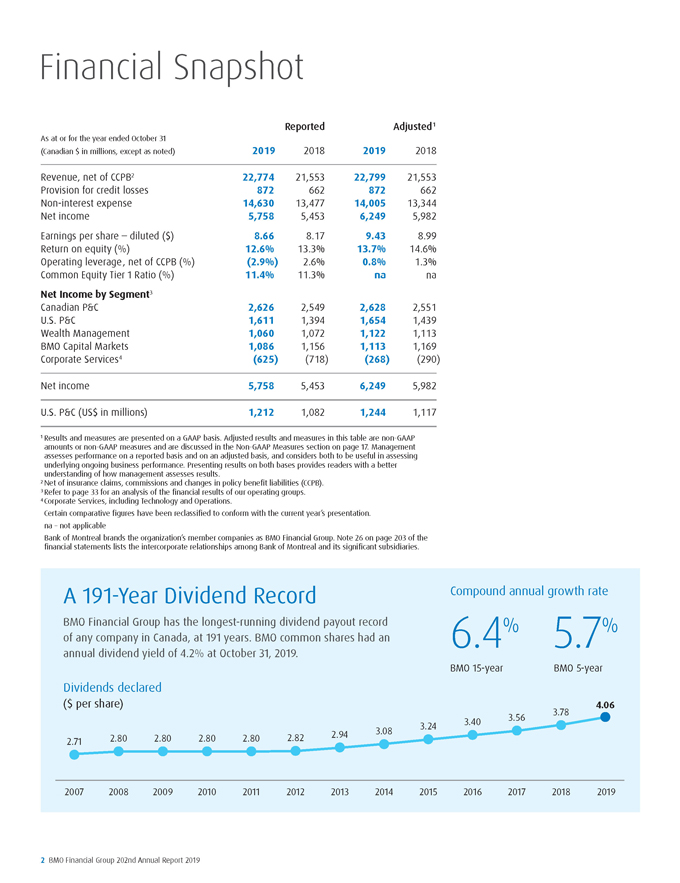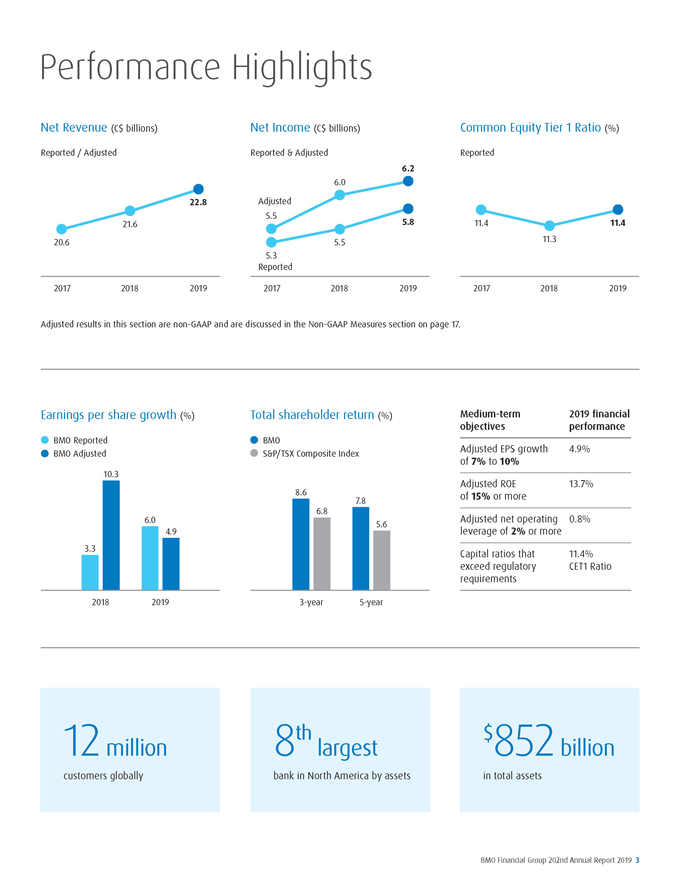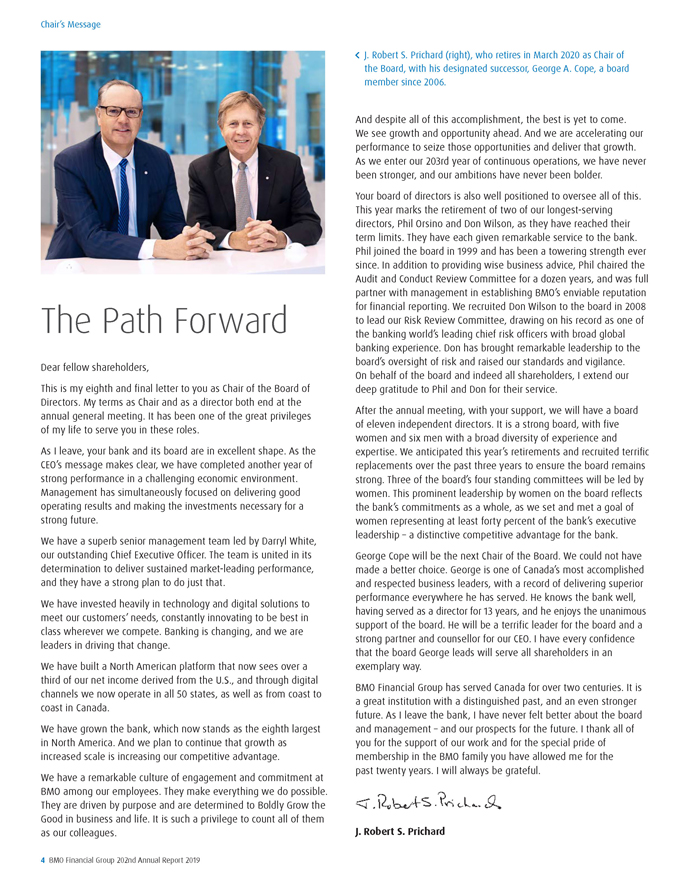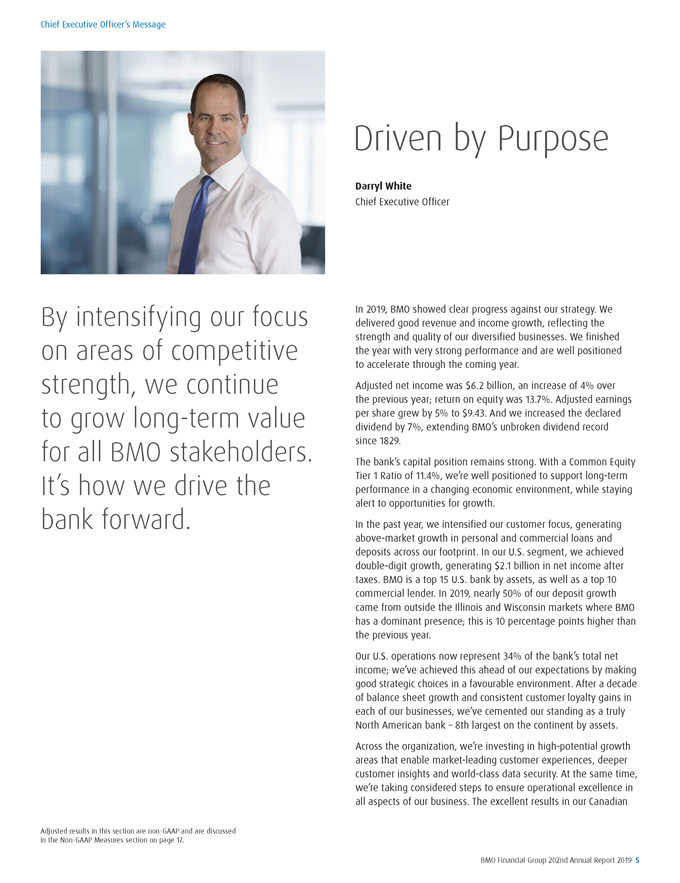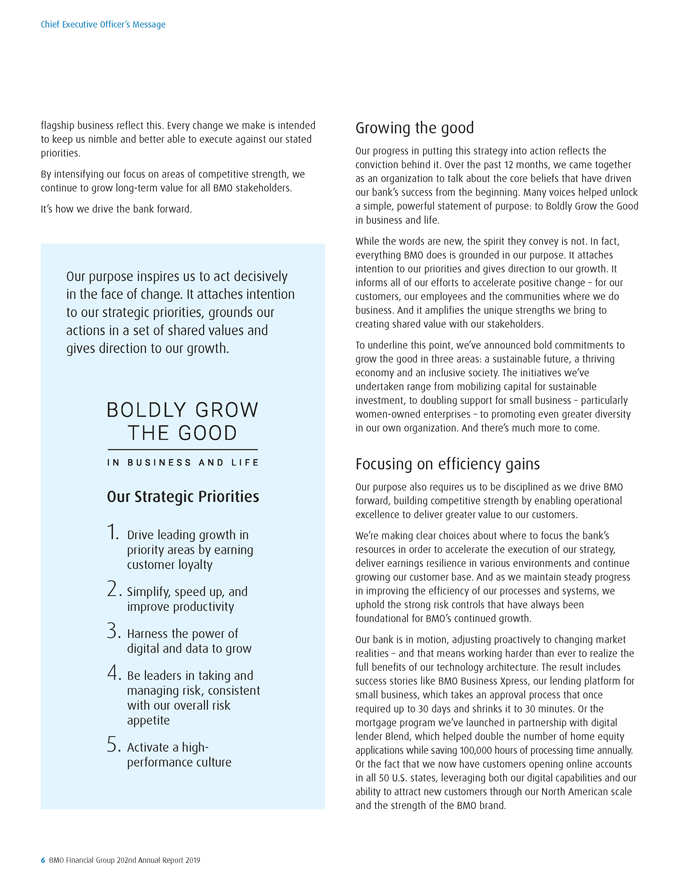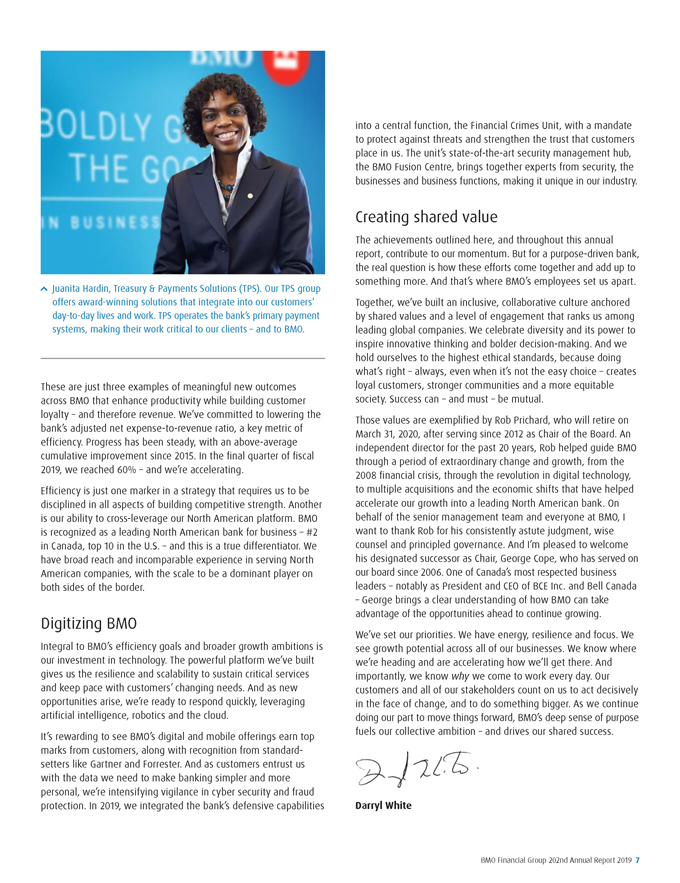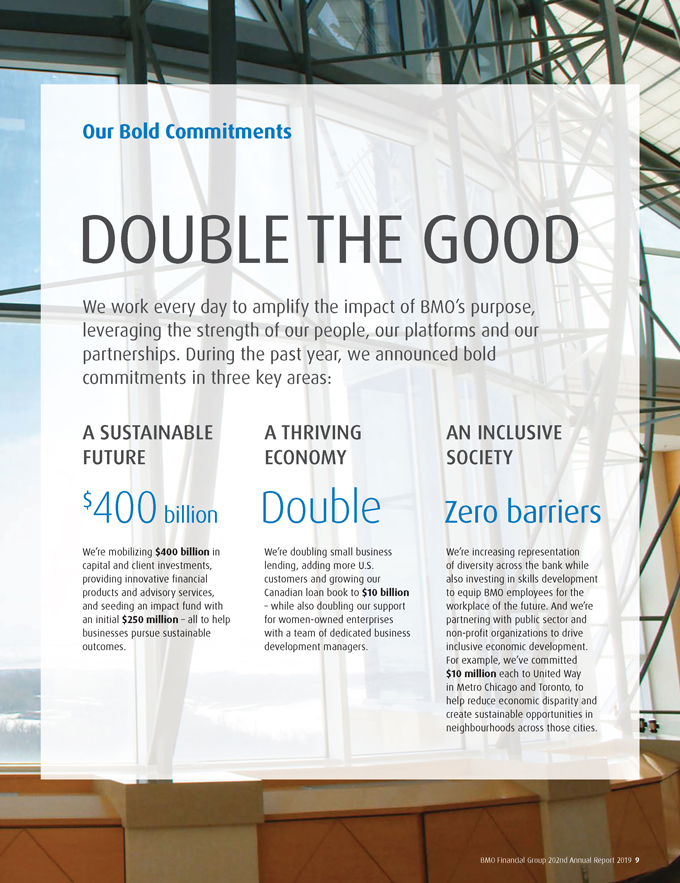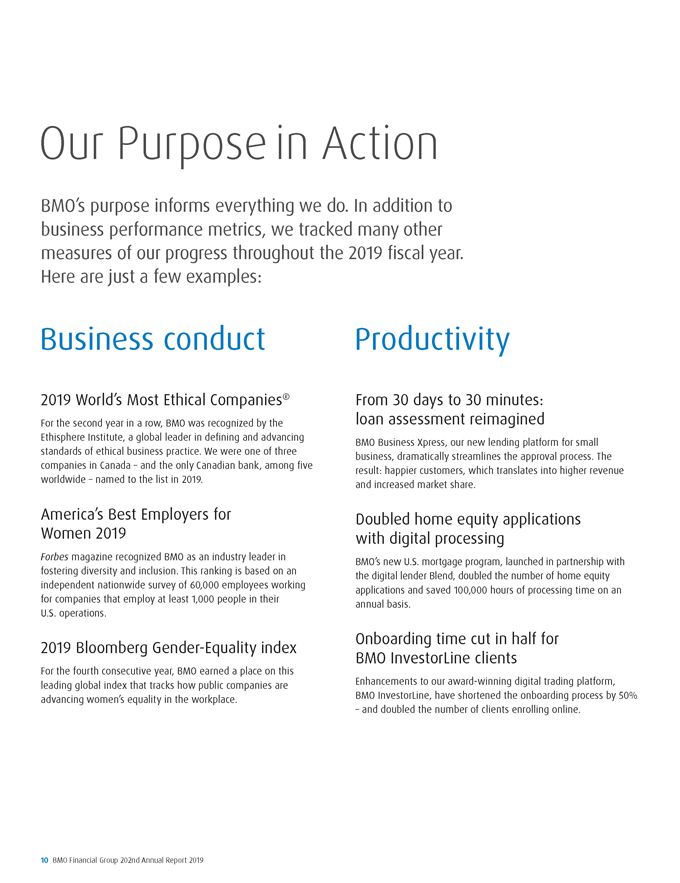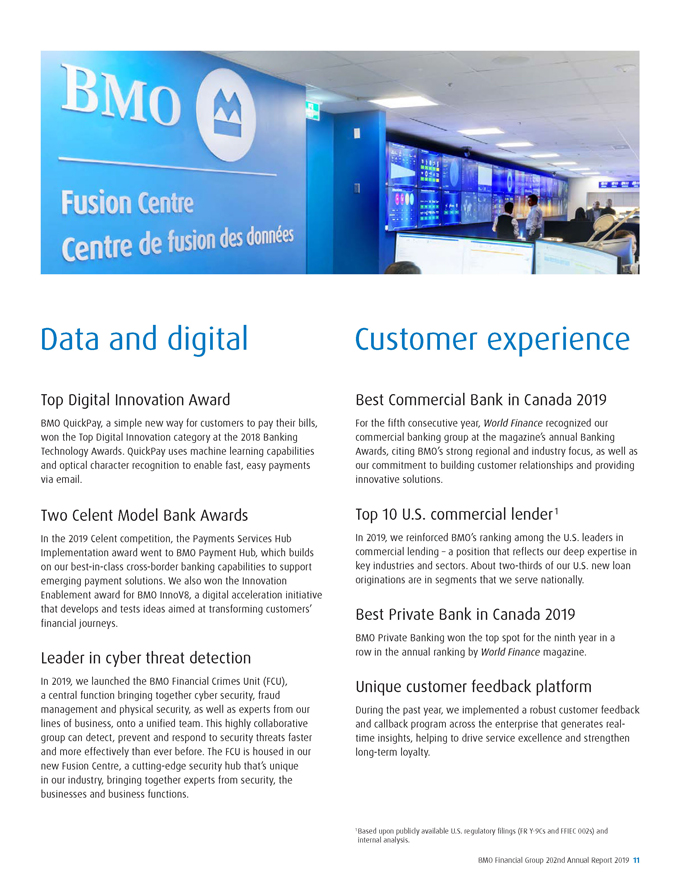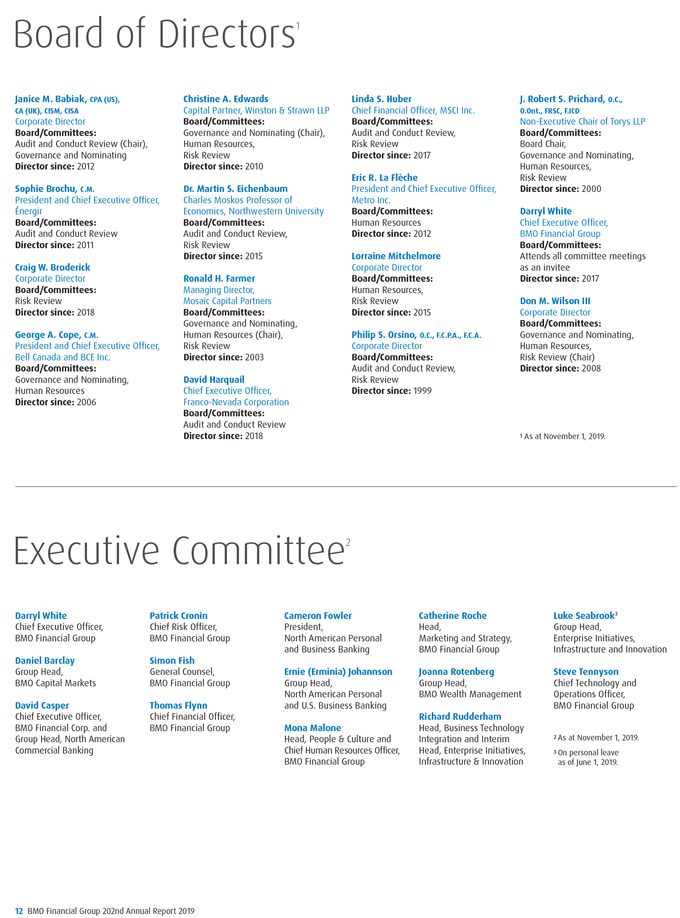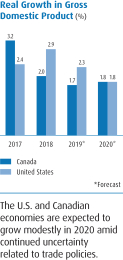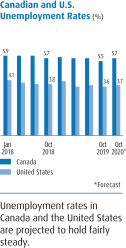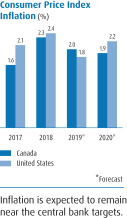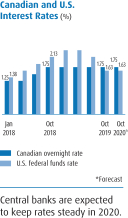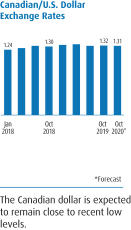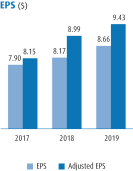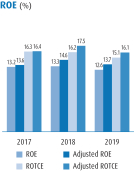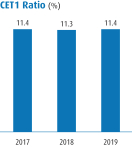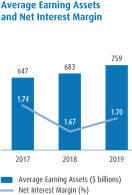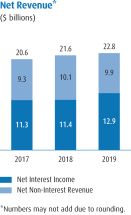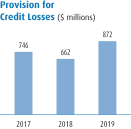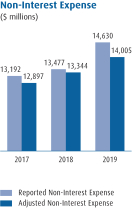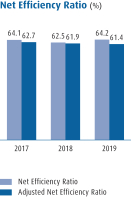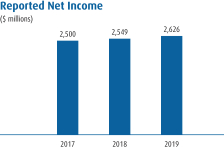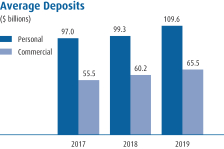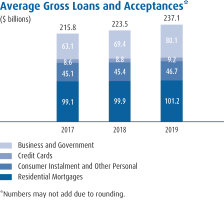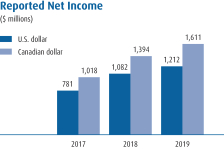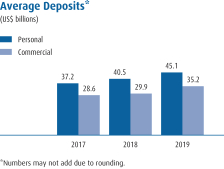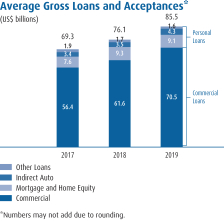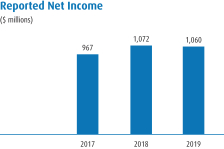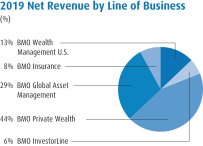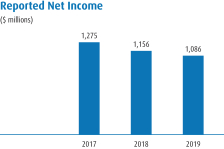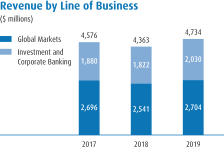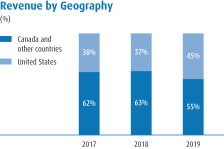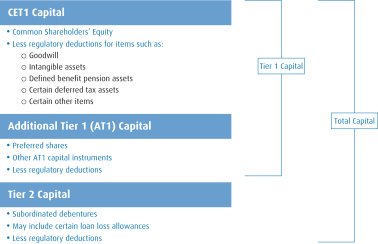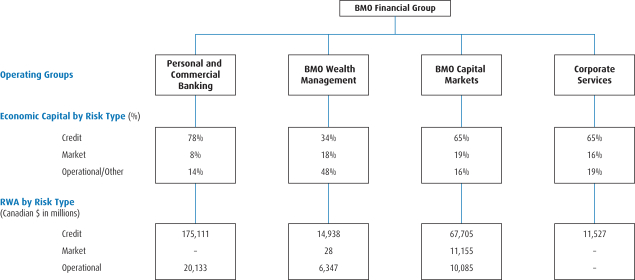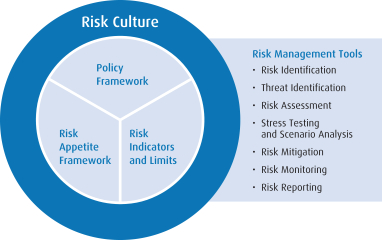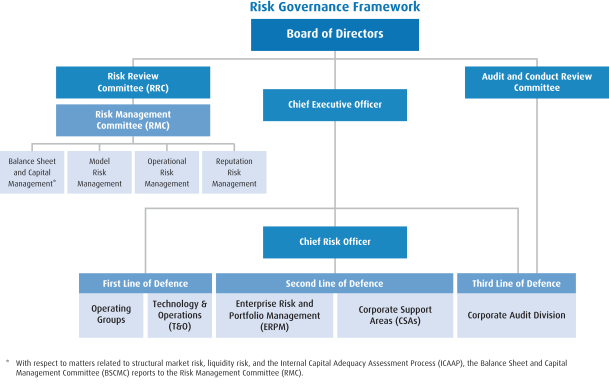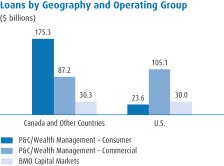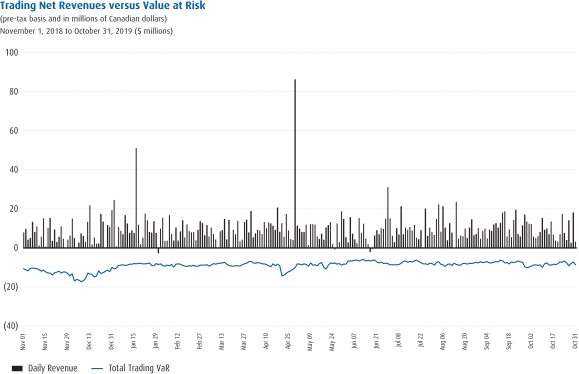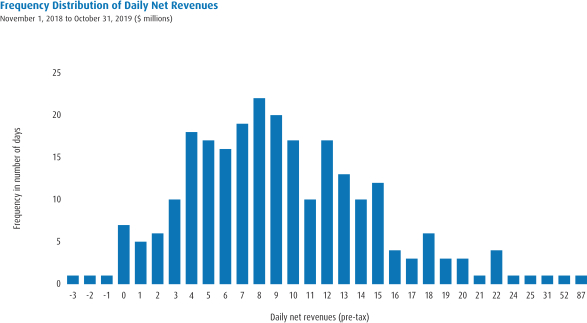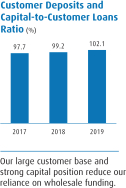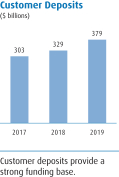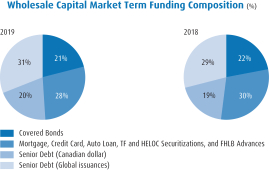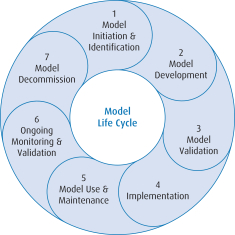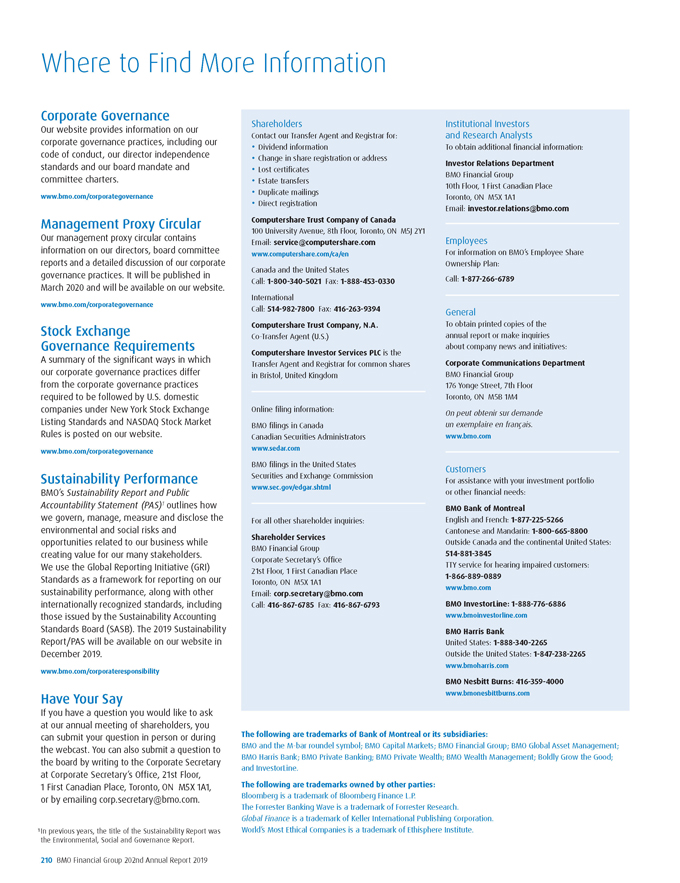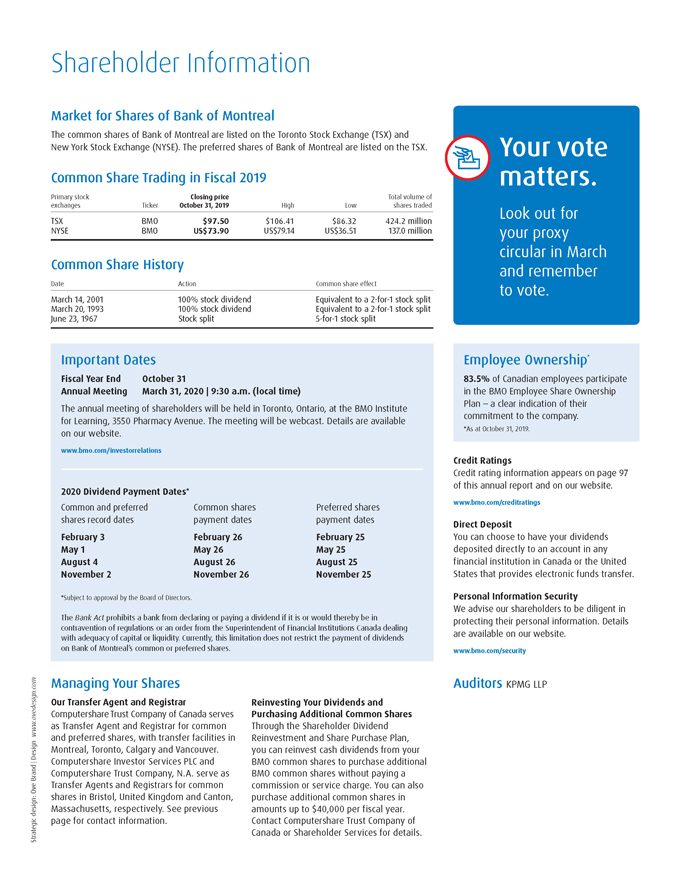NOTES TO CONSOLIDATED FINANCIAL STATEMENTS
related to these awards. All cash payments made under such arrangements are deferred in the Consolidated Balance Sheet as other assets and are recognized on a straight-line basis over the vesting period. Subsequent changes in the market value of our common shares do not affect the amount of compensation expense related to these awards. During the year ended October 31, 2017, all remaining deferred compensation related to these arrangements was recognized.
Employee compensation expense related to plans where we entered into agreements with third parties for the years ended October 31, 2019, 2018 and 2017 was $nil, $nil and $(7) million before tax, respectively ($nil, $nil and $(5) million after tax, respectively).
Mid-term incentive plan units for which we did not enter into agreements with third parties for the years ended October 31, 2019, 2018 and 2017 totalled 6.3 million, 5.9 million and 5.9 million units, respectively. The grant date fair value of these awards as at 0ctober 31, 2019, 2018 and 2017 was $616 million, $581 million and $515 million, respectively, for which we recorded employee compensation expense of $610 million, $595 million and $703 million before tax, respectively ($448 million, $437 million and $516 million after tax, respectively). We hedge the impact of the change in market value of our common shares by entering into total return swaps. We also enter into foreign currency swaps to manage the foreign exchange translation from our U.S. businesses. Gains on total return swaps and foreign currency swaps recognized for the years ended October 31, 2019, 2018 and 2017 were $20 million, $51 million and $183 million, respectively, resulting in net employee compensation expense of $590 million, $544 million and $520 million, respectively.
A total of 17.2 million, 17.1 million and 17.0 millionmid-term incentive plan units were outstanding as at October 31, 2019, 2018 and 2017, respectively, and the intrinsic value of those awards which had vested was $1,251 million, $1,269 million and $1,253 million, respectively. Cash payments made in relation to these liabilities were $642 million, $598 million and $343 million, respectively.
Deferred Incentive Plans
We offer deferred incentive plans for members of our Board of Directors, executives and key employees in BMO Capital Markets and Wealth Management. Under these plans, fees, annual incentive payments and/or commissions can be deferred as share units of our common shares. These share units are either fully vested on the grant date or vest at the end of three years. The value of these share units is adjusted to reflect reinvested dividends and changes in the market value of our common shares.
Deferred incentive plan payments are paid in cash upon the participant’s departure from the bank.
Employee compensation expense for these plans is recorded in the year the fees, incentive payments and/or commissions are earned. Changes in the amount of the incentive plan payments as a result of dividends and share price movements are recorded as increases or decreases in employee compensation expense in the period of the change.
Deferred incentive plan units granted during the years ended October 31, 2019, 2018 and 2017 totalled 0.3 million, 0.3 million and 0.3 million, respectively, and the grant date fair value of these units was $32 million, $33 million and $32 million, respectively.
Liabilities related to these plans are recorded in other liabilities in our Consolidated Balance Sheet and totalled $478 million and $485 million as at October 31, 2019 and 2018, respectively. Payments made under these plans for the years ended October 31, 2019, 2018 and 2017 were $59 million, $60 million and $32 million, respectively.
Employee compensation expense related to these plans for the years ended October 31, 2019, 2018 and 2017 was $17 million, $27 million and $91 million before tax, respectively ($12 million, $20 million and $67 million after tax, respectively). We have entered into derivative instruments to hedge our exposure related to these plans. Changes in the fair value of these derivatives are recorded as employee compensation expense in the period in which they arise. Gains on these derivatives recognized for the years ended October 31, 2019, 2018 and 2017 were $4 million, $8 million and $78 million before tax, respectively. These gains resulted in net employee compensation expense for the years ended October 31, 2019, 2018 and 2017 of $13 million, $19 million and $13 million before tax, respectively ($10 million, $14 million and $10 million after tax, respectively).
A total of 4.8 million, 4.9 million and 5.0 million deferred incentive plan units were outstanding as at October 31, 2019, 2018 and 2017, respectively.
Note 21: Employee Compensation – Pension and Other Employee Future Benefits
Pension and Other Employee Future Benefit Plans
We sponsor a number of arrangements globally that provide pension and other employee future benefits to our retired and current employees. The largest of these arrangements, by defined benefit obligation, are the primary defined benefit pension plans for employees in Canada and the United States and the primary other employee future benefit plan for employees in Canada.
Pension arrangements include defined benefit pension plans, as well as supplementary arrangements that provide pension benefits in excess of statutory limits. Generally, under these plans we provide retirement benefits based on an employee’s years of service and average annual earnings over a period of time prior to retirement. Our pension and other employee future benefit expenses, recorded in employee compensation expense, mainly comprise the current service cost plus or minus the interest on net defined benefit assets or liabilities. In addition, we provide defined contribution pension plans to employees in some of our subsidiaries. The costs of these plans, recorded in employee compensation expense, are equal to our contributions to the plans.
During the year ended October 31, 2018, we announced changes to our other employee future benefit plan for Canadian employees that will become mandatory for new retirees beginning January 1, 2021. Plan changes include an increase in the service requirement for eligibility and flexible benefits with employer premium caps. In 2018, we recorded a $277 million benefit from the remeasurement of the benefit liability innon-interest expense, employee compensation, in our Consolidated Statement of Income.
We also provide other employee future benefits, including health and dental care benefits and life insurance, for eligible current and retired employees.
Short-term employee benefits, such as salaries, paid absences, bonuses and other benefits, are accounted for on an accrual basis over the period in which the employees provide the related services.
| | |
| 190 | | BMO Financial Group 202nd Annual Report 2019 |
